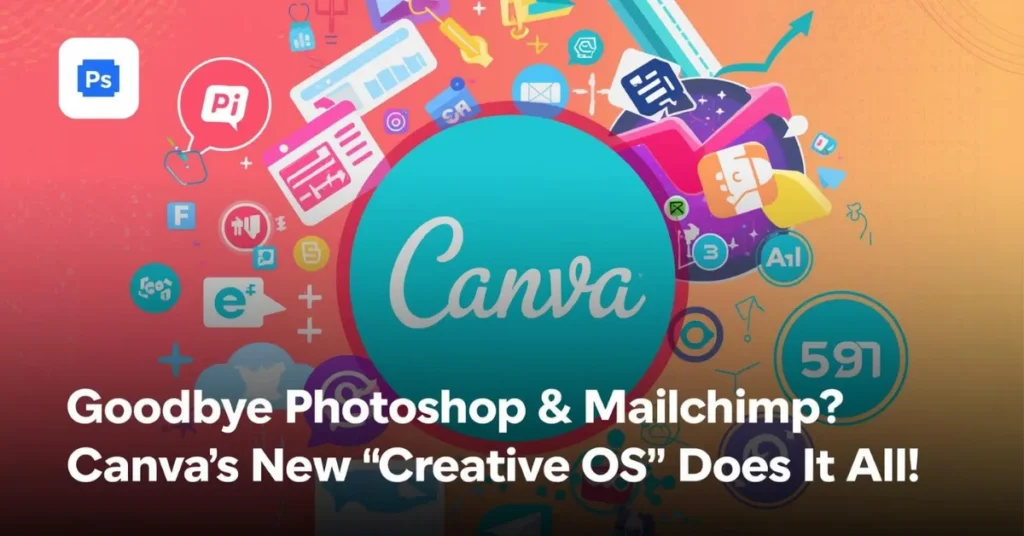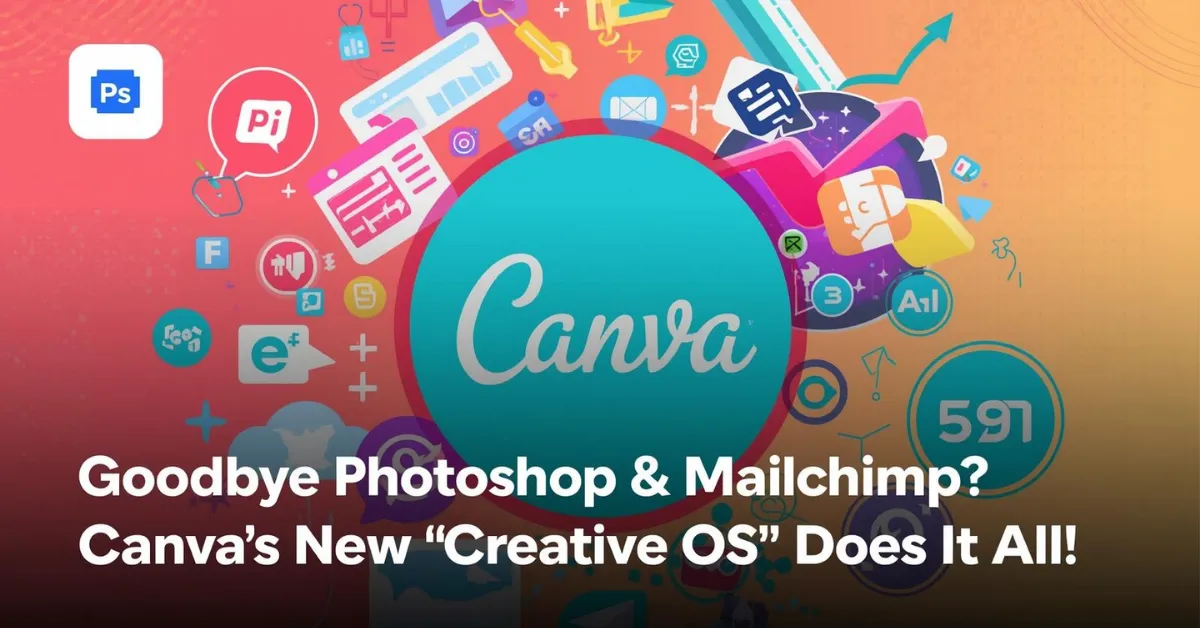Canva has just discovered its new “Creative Operating System,” a bold reimagining of how businesses, marketers, and creators can manage their entire creative process, from design to execution, in one place.
The Australian design giant, best known for its easy-to-use visual creation tools, is now going far beyond being a simple graphic design platform. With this new update, Canva is positioning itself as an end-to-end marketing and creative ecosystem, powered by its own AI design model that understands the nuances of branding, layouts, and visual storytelling.
A Design OS, But Not the Kind You Think
Let’s get this straight: Canva’s new “Creative Operating System” isn’t a traditional computer OS. You won’t be installing it on your laptop or phone. Instead, it’s a metaphorical operating system that brings together all of Canva’s tools, presentations, video, social media posts, forms, analytics, and marketing features under one connected workspace.
Cameron Adams, Canva’s co-founder, explained that the term “Operating System” reflects how deeply integrated Canva’s tools have become.
Canva’s Creative OS is designed to make it possible for marketing teams to brainstorm, design, publish, and even track campaign performance, all without ever leaving the Canva ecosystem.

New AI Model: Designed for Designers
At the heart of Canva’s new direction is its in-house AI model, trained specifically to understand “the complexity of design.” Unlike general-purpose AI models like ChatGPT or Midjourney, Canva’s model is built around visual balance, brand consistency, and layout intelligence.
This means Canva’s AI can now automatically adjust elements for better composition, suggest brand-accurate color palettes, and even optimize creative assets for performance in marketing campaigns.
Premium users are already seeing these AI-driven improvements woven into every corner of Canva’s tools, from Magic Studio’s text-to-design features to automated video editing and campaign optimization.
Video Editing Made Effortless
One of the biggest updates in this rollout is Canva’s new Video 2.0 editor, a complete redesign aimed at non-professionals who want to create polished videos without advanced editing skills.
The new video editor introduces:
- A simplified timeline interface for trimming, syncing, and layering clips.
- AI-generated video effects and transitions.
- A vast new template library tailored for marketing, social media, and business content.
The focus is on simplicity and speed. Users can now generate video scripts, visuals, and animations automatically, making it a strong competitor to tools like Adobe Express and CapCut Pro.
New Tools for Marketers: Canva Grow, Forms, and Email Design
Canva’s shift toward marketing teams is crystal clear with the introduction of three major new products inside its “Creative OS” suite:
1. Canva Grow
This is Canva’s all-in-one AI-powered marketing platform that lets users design, launch, and track advertising campaigns, all within Canva.
What makes it special is its ability to learn from campaign performance data, helping marketers improve results automatically over time. Think of it as a fusion of creative design and marketing analytics.
2. Forms
Similar to Google Forms, Canva’s new Forms feature allows teams to collect feedback, survey audiences, or gather campaign data, which can then be integrated directly into Canva Sheets for visual data analysis or campaign reporting.
3. Email Design Tool
This new product allows users to design professional, branded email campaigns without needing HTML or switching to tools like Mailchimp. Teams can create, export, and send marketing emails directly, keeping their workflow unified inside Canva.
The Bigger Picture: Canva vs Google and Microsoft
This update cements Canva’s ambition to become a complete creative workspace, not just a design app. Over the years, Canva has quietly expanded into territories traditionally dominated by Google Workspace and Microsoft Office.
With tools like Canva Docs, Canva Presentations, and Canva Sheets, the platform now competes directly with Google Docs and Microsoft 365, but with a visual-first approach that’s far more appealing to marketers, educators, and small businesses.
By introducing the “Creative Operating System,” Canva isn’t just simplifying design. It’s offering a unified alternative to fragmented workflows, replacing a mix of apps like Adobe Express, Google Drive, and Mailchimp with one seamless ecosystem.
AI Features Behind the Paywall
While Canva’s new features sound exciting, not all of them are free. Many of the advanced AI tools, including parts of the Creative OS suite, are available only to Canva Pro or Teams subscribers.
When asked if Canva would ever let users selectively pay for only the tools they need, Adams made it clear: there are no current plans to unbundle the platform.
That means users who want access to the full power of Canva’s AI will need to opt into a premium plan.
What This Means for Creators and Businesses
Canva’s Creative OS signals a clear shift toward AI-powered marketing automation and creative collaboration.
Instead of juggling multiple subscriptions, teams can now brainstorm ideas, design campaigns, collect feedback, and measure success, all in one place.
It’s an ambitious move that could redefine how small businesses and large marketing teams manage creative operations in 2025 and beyond.
Key Takeaway
Canva’s new “Creative Operating System” isn’t a literal OS; it’s a complete creative workflow hub powered by smart AI, seamless integrations, and a design-first philosophy.
From AI-enhanced video editing to data-driven campaign management, Canva is no longer just a design tool; it’s a marketing command center for the modern digital era.
